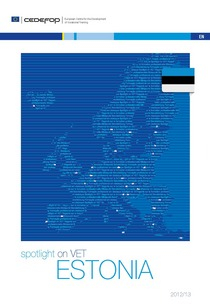Estonia's performance in vocational education and training is improving, according to this concise guide, and the aim is to respond better to labour market needs with the close involvement of social partners in policy development.
Some of the guide's main points:
- VET is accessible to everyone aged over 16.
- New legislation (September 2013) stipulates that both initial (IVET) and continuing (CVET) vocational education curricula are used in formal VET.
- Most VET studies are school-based. However, for some specialities apprenticeship training is also available.
- VET infrastructure has been renovated in recent years and financial assistance towards housing and travelling expenses is available to students.
- The adult population’s participation rate in lifelong learning has been steadily increasing and was 12.9% in 2012, which is higher than the EU average.
- Occupational standards in the new eight-level Estonian qualifications framework are outcomes-based.
- To implement new VET legislation, curricula reform has been launched. Many study programmes will be shortened, especially in post-secondary VET, to enable faster employment of graduates in companies.
News details
News type
Source
Cedefop
Related Theme
